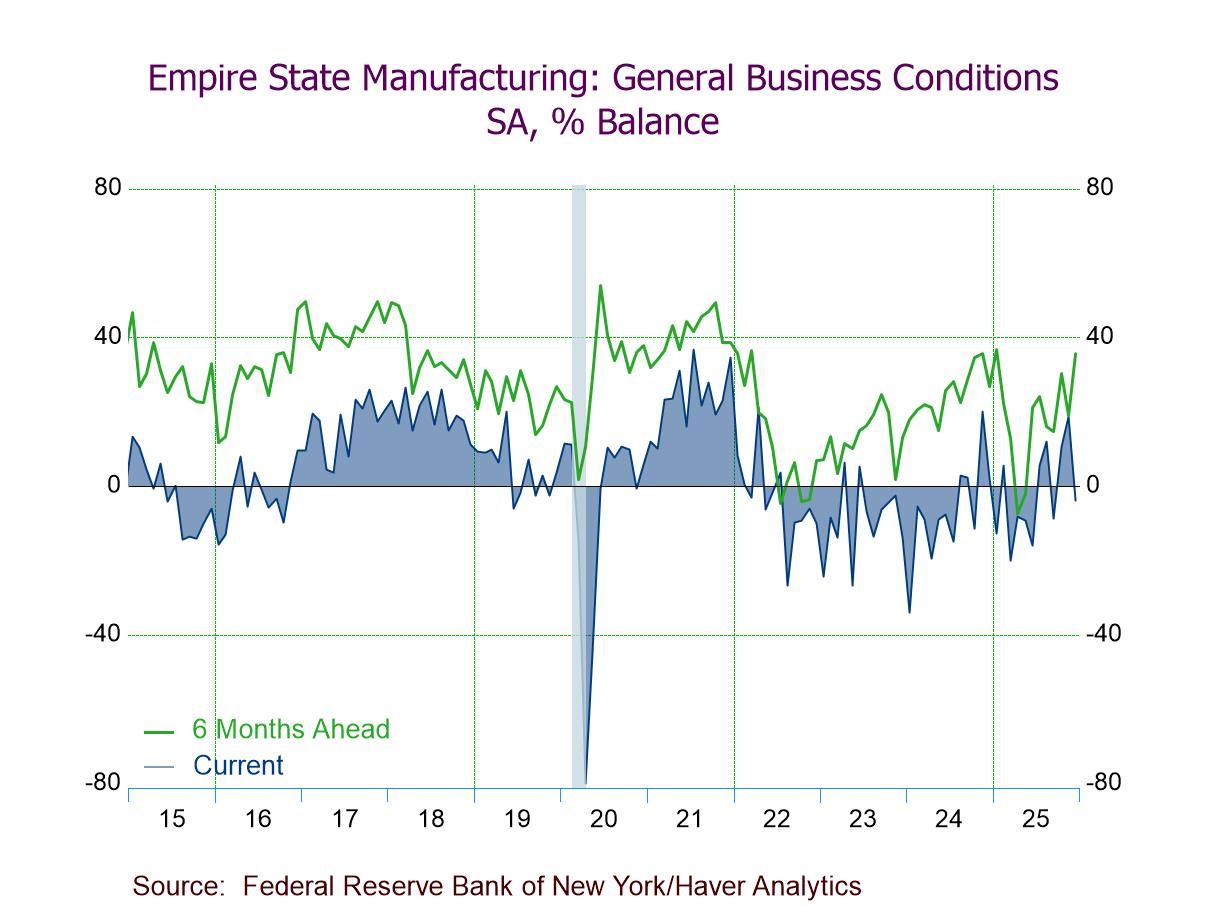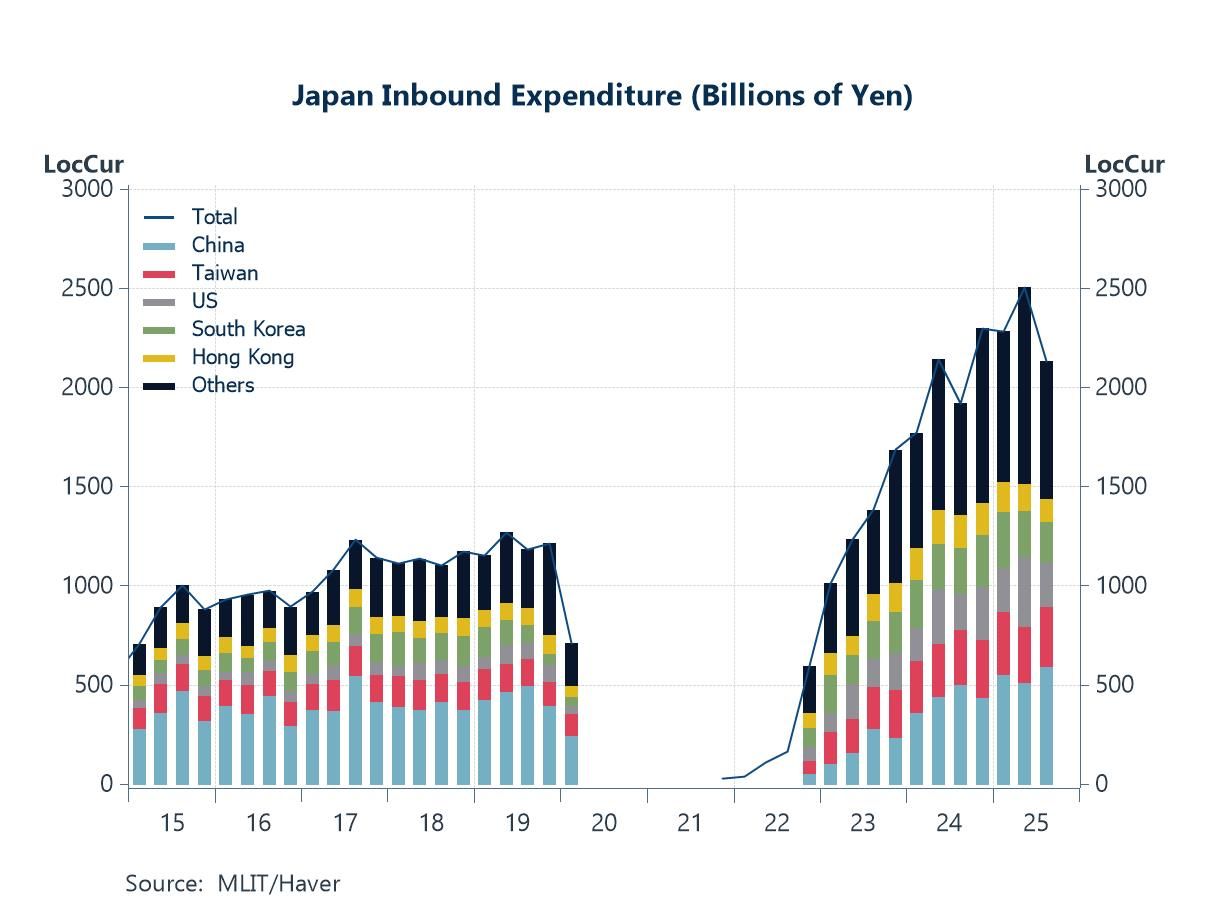 Global| Feb 14 2020
Global| Feb 14 2020U.S. Retail Sales Rise Steadily
by:Tom Moeller
|in:Economy in Brief
Summary
Total retail sales including food service establishments increased 0.3% (4.4% y/y) during January following a 0.2% December gain, revised from 0.3%. The increase matched expectations in the Action Economics Forecast Survey. Retail [...]
Total retail sales including food service establishments increased 0.3% (4.4% y/y) during January following a 0.2% December gain, revised from 0.3%. The increase matched expectations in the Action Economics Forecast Survey. Retail sales excluding motor vehicles & parts also rose an expected 0.3% (4.0% y/y) last month after a 0.6% increase in December, revised from 0.7%.
Retail sales alone edged 0.1% higher (4.0% y/y) following no change last month, which was revised from 0.4%. A 3.1% decline (0.0% y/y) in apparel store sales weakened the result as it followed December's 2.7% jump. A 2.1% (-1.3% y/y) rise in building materials store sales offset most of this weakening. Motor vehicles purchases improved 0.2% (5.7% y/y) as unit sales of light vehicles (reported earlier this month) rose 1.1%. Nonstore retail sales increased 0.3% (8.4% y/y) after four straight months of decline. General merchandise store sales rose 0.5% (2.1% y/y), up for the fourth straight month. Furniture & home furnishings store sales improved 0.6% (1.8% y/y) following a 1.6% decline, but electronics & appliance store sales eased 0.5% (-3.2% y/y), and reversed December's rise. Sporting goods, hobby, book & music store sales gained 0.1% (-1.8% y/y) following little change.
Gasoline & service station sales eased 0.5% (+10.4% y/y) as gasoline prices declined.
In the nondiscretionary sales categories, food & grocery store sales improved 0.2% (2.3% y/y) after rising 0.5% in December. Sales of health & personal care product stores offset this gain with a 0.4% decline (-1.9% y/y), and they've been declining steadily since the middle of last year.
Restaurant sales increased 1.2% (7.4% y/y), the same as in December, which was revised from 0.2%.
The retail sales data can be found in Haver's USECON database. The Action Economics forecast is in the AS1REPNA database.
| Retail Spending (% chg) | Jan | Dec | Nov | Jan Y/Y | 2019 | 2018 | 2017 |
|---|---|---|---|---|---|---|---|
| Total Retail Sales & Food Services | 0.3 | 0.2 | 0.2 | 4.4 | 3.5 | 4.8 | 4.6 |
| Excluding Autos | 0.3 | 0.6 | -0.2 | 4.0 | 3.4 | 5.5 | 5.0 |
| Retail Sales | 0.1 | 0.0 | 0.3 | 4.0 | 3.4 | 4.6 | 4.5 |
| Retail Less Autos | 0.1 | 0.5 | -0.1 | 3.4 | 3.2 | 5.3 | 4.8 |
| Motor Vehicle & Parts | 0.2 | -1.7 | 1.6 | 5.7 | 4.0 | 2.3 | 3.4 |
| Gasoline Service Stations | -0.5 | 1.7 | 0.6 | 10.4 | 0.4 | 12.6 | 8.9 |
| Food Service & Drinking Places Sales | 1.2 | 1.2 | -0.6 | 7.4 | 4.4 | 6.3 | 5.9 |
U.S. Business Inventories Edge Higher While Sales Ease
by Tom Moeller February 14, 2020
Total business inventories rose an expected 0.1% (2.2% y/y) during December following an unrevised 0.2% November decline. The expected figure is from the Informa Global Markets survey. At the same time, business sales fell 0.1% (+1.7% y/y) following a 0.5% jump. As a result, the inventory-to-sales ratio rose to 1.40. It has been moving sideways since the end of 2018.
Retail inventories were little changed (1.1% y/y) in December after a 0.9% decline. Motor vehicle dealers' inventories eased 0.1% in December (-0.3% y/y), down for the third straight month. Nonauto inventories held steady (1.9% y/y) after November's 0.3% decrease. Inventories of furniture & home furnishings fell 0.6% (+2.3% y/y) following a 1.0% decline. Clothing inventories were off 0.4% (-1.5% y/y), down for five straight months. General merchandise store inventories fell 0.6% (-0.8% y/y) while department store inventories weakened 2.4% (-7.3% y/y). Wholesale inventories edged 0.2% lower (+2.1% y/y) after two months of 0.1% rise. Factory sector inventories strengthened 0.5% (3.3% y/y) after a 0.3% increase.
Sales of retail stores (not including the food service sector) were unchanged in December (5.4% y/y) after rising 0.3% in November. Excluding auto dealers, retail sales improved 0.5% (6.0% y/y) after easing 0.1%. Wholesale sector sales declined 0.7% (+0.5% y/y) and reversed November's rise. Shipments from the factory sector increased 0.5% (-0.2% y/y) following their 0.3% November rise.
The inventory-to-sales ratio in the retail sector held steady at 1.43 in December, the lowest level since May 2015. The ratio for retailers excluding auto dealers eased to 1.18, down from the March 2016 high of 1.29. For merchant wholesalers, the I/S ratio was steady at 1.36 and for manufacturers, it was 1.40 for a fourth month.
The manufacturing and trade data are in Haver's USECON database.
| Manufacturing & Trade | Dec | Nov | Oct | Dec Y/Y | 2019 | 2018 | 2017 |
|---|---|---|---|---|---|---|---|
| Business Inventories (% chg) | 0.1 | -0.2 | 0.1 | 2.2 | 2.2 | 5.1 | 3.4 |
| Retail | -0.0 | -0.9 | 0.1 | 1.1 | 1.1 | 4.5 | 2.3 |
| Retail excl. Motor Vehicles | 0.0 | -0.3 | 0.5 | 1.9 | 1.9 | 1.8 | 2.0 |
| Merchant Wholesalers | -0.2 | 0.1 | 0.1 | 2.1 | 2.1 | 7.3 | 3.3 |
| Manufacturing | 0.5 | 0.3 | 0.2 | 3.3 | 3.3 | 3.5 | 4.5 |
| Business Sales (% chg) | |||||||
| Total | -0.1 | 0.5 | -0.2 | 1.7 | 1.5 | 6.1 | 5.4 |
| Retail | 0.0 | 0.3 | 0.4 | 5.4 | 3.4 | 4.6 | 4.5 |
| Retail excl. Motor Vehicles | 0.5 | -0.1 | 0.2 | 6.0 | 3.2 | 5.3 | 4.8 |
| Merchant Wholesalers | -0.7 | 0.9 | -0.9 | 0.5 | 0.6 | 6.7 | 6.7 |
| Manufacturing | 0.5 | 0.3 | 0.1 | -0.2 | 0.7 | 6.9 | 5.0 |
| I/S Ratio | |||||||
| Total | 1.40 | 1.39 | 1.40 | 1.39 | 1.40 | 1.36 | 1.38 |
| Retail | 1.43 | 1.43 | 1.45 | 1.49 | 1.45 | 1.45 | 1.47 |
| Retail excl. Motor Vehicles | 1.18 | 1.19 | 1.19 | 1.23 | 1.19 | 1.20 | 1.24 |
| Merchant Wholesalers | 1.36 | 1.36 | 1.37 | 1.34 | 1.35 | 1.29 | 1.30 |
| Manufacturing | 1.40 | 1.40 | 1.40 | 1.35 | 1.38 | 1.35 | 1.37 |
U.S. Housing Affordability Declines As House Prices Rise
by Tom Moeller February 14, 2020
The National Association of Realtors reported that its Fixed Rate Mortgage Housing Affordability Index fell 1.2% m/m (+10.4% y/y) to 161.8 in December from 163.7 in November. It was the lowest level of affordability since August and remained well below the all-time high of 213.3 reached in January 2013.
In December, monthly principal and interest payments increased to $1,030 from $1,016 in November
and rose to 15.5% of income. The median sales price increased 8.0% y/y to $277,000. Median family income continued to increase, rising to $79,970, up 3.3% y/y. The effective mortgage interest rate edged up three basis points to 3.78% in December, but remained below the 4.99% recorded in November of 2018.
The Housing Affordability Index equals 100 when median family income qualifies for an 80% mortgage on a median-priced existing single-family home. A rising index indicates an increasing number of buyers can qualify for a mortgage to purchase the median-priced home. Data on Home Affordability can be found in Haver's REALTOR database. Interest rate data can be found in the WEEKLY and DAILY databases.
Tom Moeller
AuthorMore in Author Profile »Prior to joining Haver Analytics in 2000, Mr. Moeller worked as the Economist at Chancellor Capital Management from 1985 to 1999. There, he developed comprehensive economic forecasts and interpreted economic data for equity and fixed income portfolio managers. Also at Chancellor, Mr. Moeller worked as an equity analyst and was responsible for researching and rating companies in the economically sensitive automobile and housing industries for investment in Chancellor’s equity portfolio. Prior to joining Chancellor, Mr. Moeller was an Economist at Citibank from 1979 to 1984. He also analyzed pricing behavior in the metals industry for the Council on Wage and Price Stability in Washington, D.C. In 1999, Mr. Moeller received the award for most accurate forecast from the Forecasters' Club of New York. From 1990 to 1992 he was President of the New York Association for Business Economists. Mr. Moeller earned an M.B.A. in Finance from Fordham University, where he graduated in 1987. He holds a Bachelor of Arts in Economics from George Washington University.






